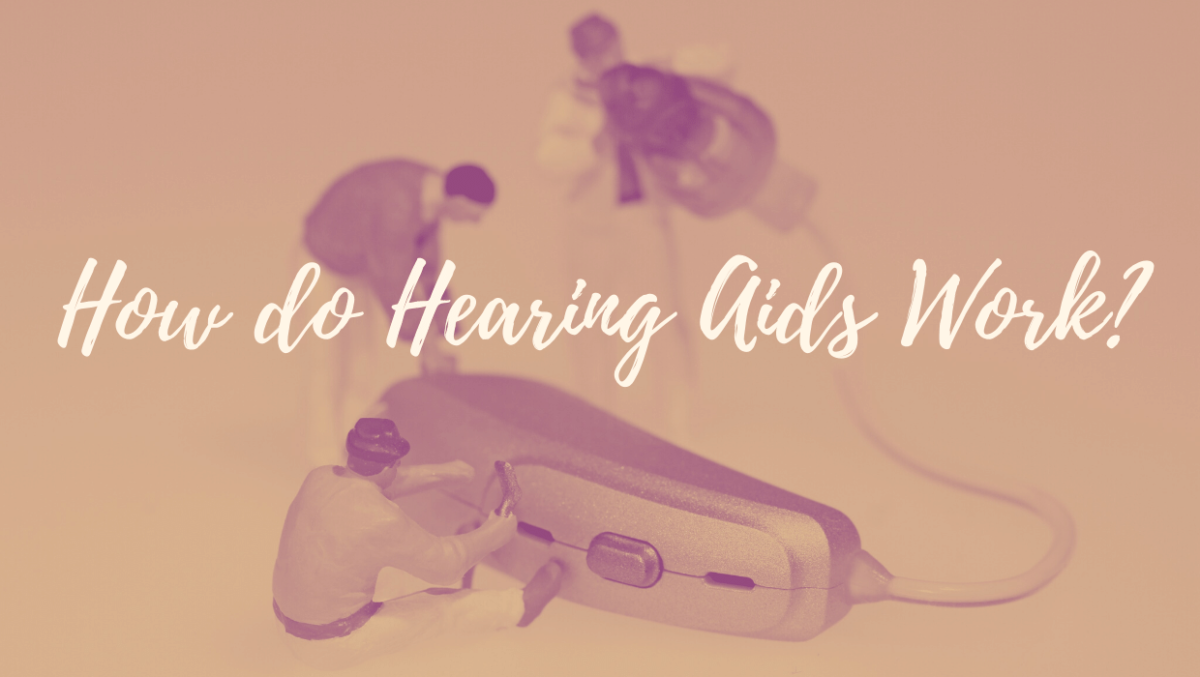Hearing aids have been found over and over again to help combat the negative side effects of hearing loss. From reducing the risk of miscommunication, falls, accidents, depression, anxiety, social isolation and even dementia, hearing aids are essential tools for staying healthy. How exactly do these amazing contraptions work?
What is a hearing aid?
A hearing aid is a tiny electronic device worn in or behind the ear that supplements for hearing loss, improving speech comprehension and communication. The most common hearing loss occurs when the tiny hair and nerves in the inner ear, which transmit sound to the brain to be processed, become damaged or destroyed. This commonly happens due to advanced aging, exposure to excessive noise, infections, head trauma and more. A hearing aid amplifies the world around you and sends the sounds to your inner ear to be processed easier with your existing hearing.
Four major components of a hearing aid
There are many styles of hearing aids but every single one uses four basic components including: a microphone, an amplifier, a receiver and a battery. These components work together to help you hear and process the world around you so you can participate without having to let trouble with hearing slow you down.
- The microphone plays an important role in every hearing aid on the market. It picks up the sounds in a space and converts the sound waves into an electrical signal.
- The job of the amplifier in hearing aids is to increase the volume and power of the sounds received form the microphone so these sounds can be heard easier by the listener. Another job of the amplifier is to control the level of the sound so that it is not too loud. Filters and equalizers help the listener prioritize desirable sounds and help to filter out background noise.
- The receiver is the piece of the hearing aid that directs sound into the inner ear. The receiver, also described as the hearing aid speaker, converts the electrical signal from the microphone into an acoustic signal. This amplified sound information is sent to the inner ear to help a damaged ear hear sounds that the listener may be struggling with.
Because hearing aids are worn almost everywhere, they need a power source that can help power them. The battery acts as the power source for hearing aids. Traditional batteries last 5 to 14 days. Today more and more hearing aids are equipped with rechargeable batteries that can be charged overnight so the user does not have to deal with changing out hearing aid batteries on a regular basis.
Find the best style for you
There are many other parts of the hearing aid which differ depending on the style of hearing aid you find works best with your lifestyle. There are six major styles of hearing aids that all have their own pros and cons, depending on your needs around hearing and the activities you engage with the most on a daily basis. The six major styles of hearing aids include:
- Behind-The-Ear (BTE) hearing aid rests behind the ear and transmits sound to the inner ear via a plastic acoustic tube. This style is the largest and most common type of hearing aid working best for people suffering for moderate to severe hearing loss.
- Receiver-In-Canal (RIC) hearing aids place the receiver inside the ear canal and are connected to the main device by a thin wire. This model is small and discrete and works best for those with mild to moderate hearing loss.
- In-The-Ear (ITE) hearing aids are custom fit to the shape of your ears. Resting in the outer portion of your ear they fill either half of all of your ear’s conchal bowl. Best for people with an active lifestyle, with moderate to severe hearing loss.
- In-The-Canal (ITC) hearing aids are smaller than ITEs, more discrete and best for those with mild to moderate hearing loss.
- Completely-In-Canal (CIC) hearing aids are custom made and fit completely in your ear canal.
- Invisible (IIC) hearing aids are the most discreet hearing aids, best for those with mild hearing loss
While choosing a new pair of hearing aids may seem daunting, our team is here to provide assistance! We can help you explore the benefits of each type of hearing aid to find the best hearing aids for you based on the results of your hearing test. Contact us today to learn more!

